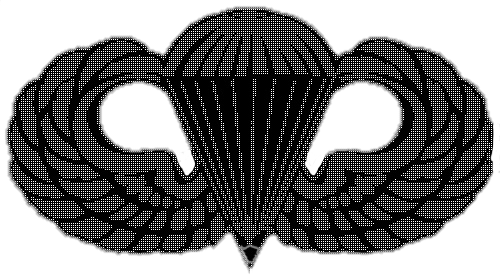Part 1: Introduction
It's important to begin saying that the author of this effort has not been to Ranger School, was not in Regiment, and only enjoyed reading and applying what was written in the Ranger Handbook (SH 21-76 during his limited era at arms, and now TC 3-21.76). It is certainly going to bother a few people who think either are required to undertake this project. If anyone reading this is bothered, consult the contacts page and send me a message letting me know you wish to takeover. You're certainly better qualified and it would be appreciated, as I'm beginning to realize the depth of my commitment in attempting the task of explaining complex tactical efforts without the benefit of a hands-on and well developed curriculum.
The next item of importance before we begin is versioning. There are multiple versions of the Ranger Handbook, with many small and some major differences. The delta between them will be covered as well as can be accomplished. If it is possible for me to ascertain, I would like to offer explanation the differences. Any major differences will be resolved with suggestion that the latest version is official canon. This is assuming that the Ranger Training Brigade made the update with better/new knowledge or experience to justify the modification. The two versions primarily used will be April 2000 (the version most familiar to the author) and April 2017 (the latest supported and official version).
The last item before we begin is a request for patience. To make this effort worthwhile it will require a lot of time and effort. Some of the material is well remembered and practiced by the author, some is merely understood, and a good bit is wholly unfamiliar. Every attempt will be made to make a good effort at it, and to publish in a timely manner. It may even be that others will be consulted and possibly act as authors. Just be patient. I think this project is a good one but we must not force the muse, nor expose ourselves to reporting things incorrectly.
This all finally said, let us begin our patrol through the text.
Prefaces
Each version starts very well. Any and all readers are encouraged to review the Ranger history, Rogers' Standing Orders, the Ranger Creed, and the list of Medal of Honor winners. It is no overstatement when it is said that the Ranger Regiment is the finest Light Infantry unit in modern times, possibly that has ever been organized. This manual has served the United States Army as the cherished and lethal instructions of combat arms. During my own time on the Line it was most the often used, cited, and read Dark Gospel when someone desired to learn how to patrol, ambush, raid, and generally kill the enemy.
Everyone begins their journey through this manual of arms reading about the Rangers, so you should too. Take the time to study this important unit's history. Remember that the reason this manual is taken so seriously, is because of the history and the men this unit has produced. Don't neglect the material before Chapter One. It is good stuff. As soon as you finish begin to read and ruminate over the first chapter, which we will cover soon in Chapter One: Leadership.
